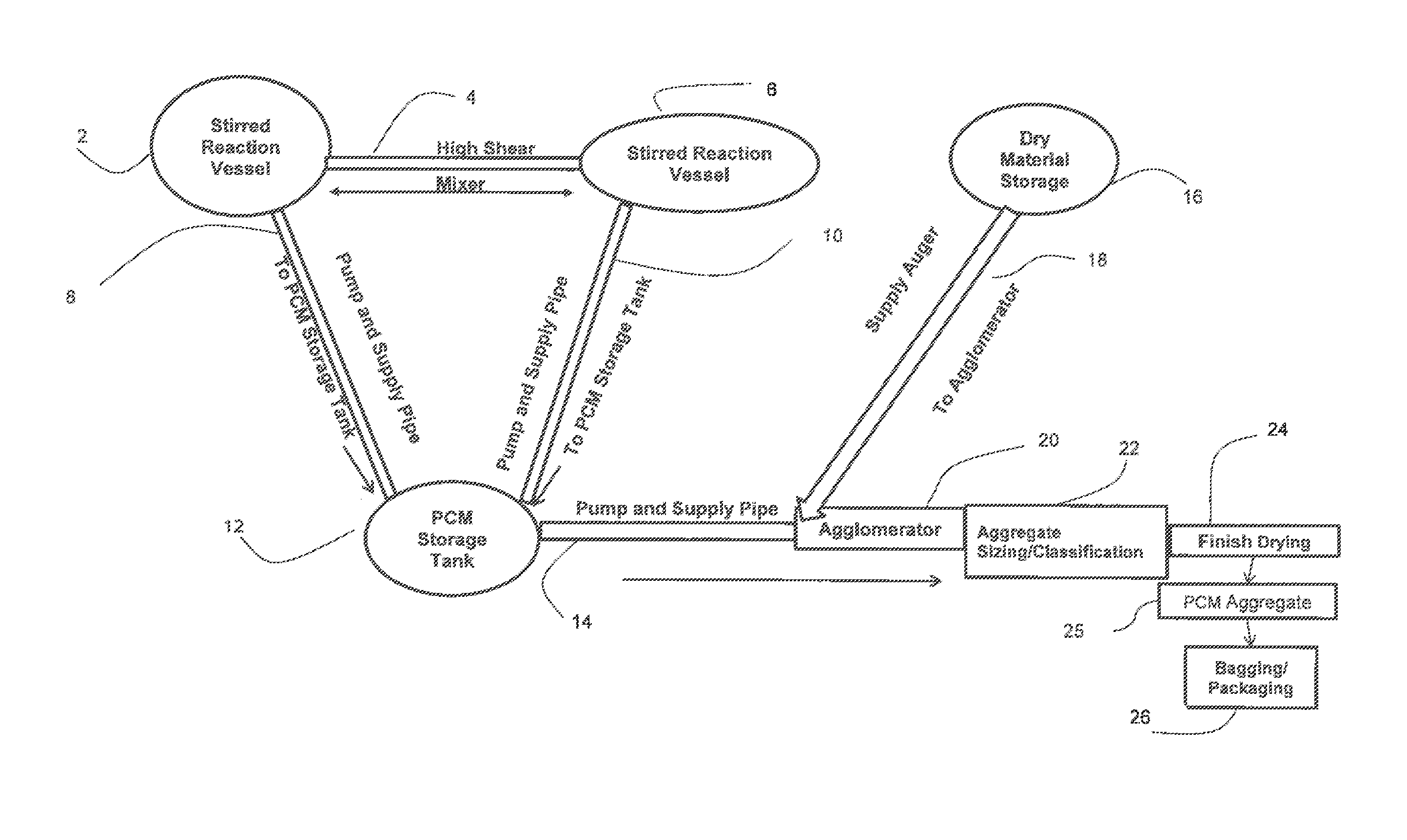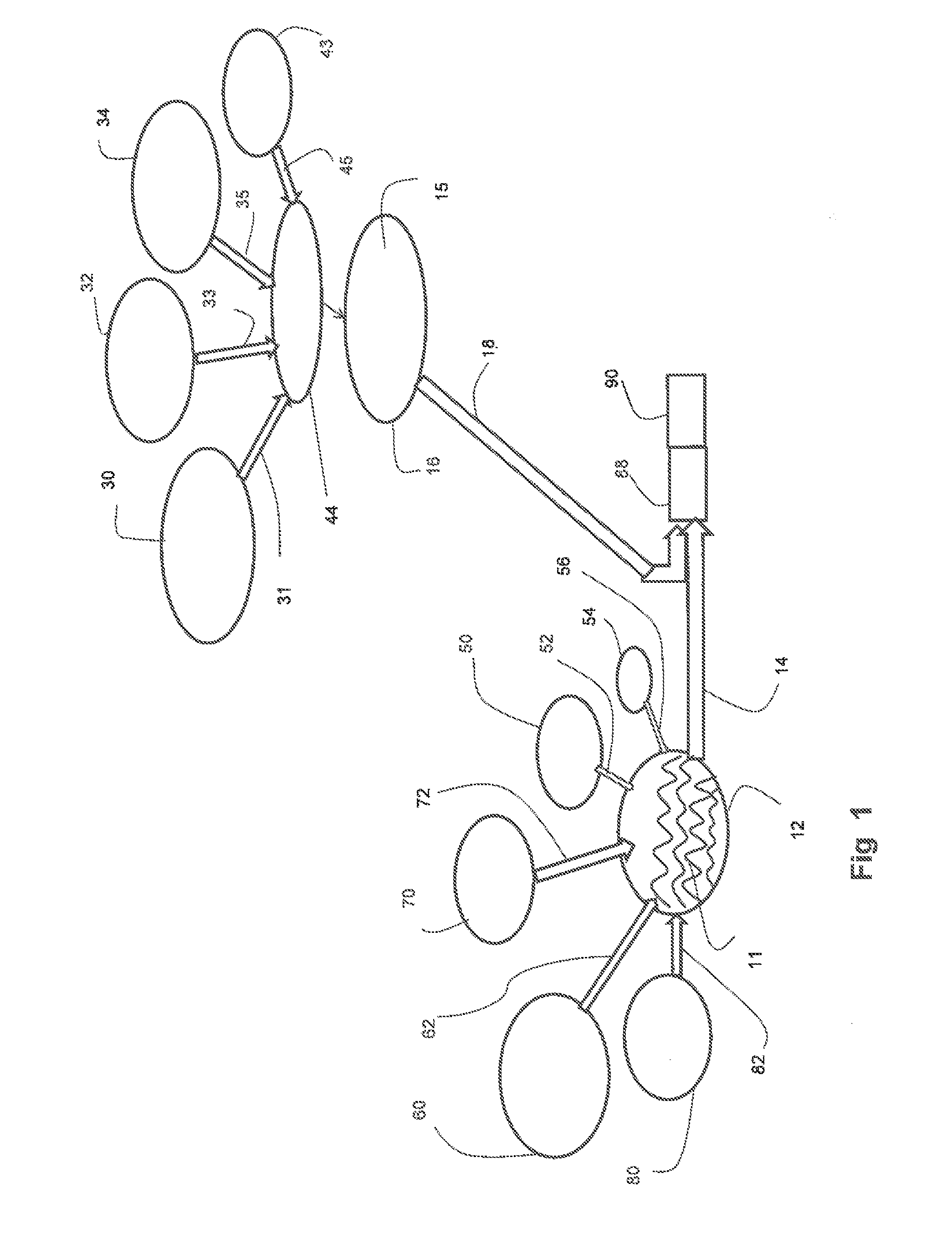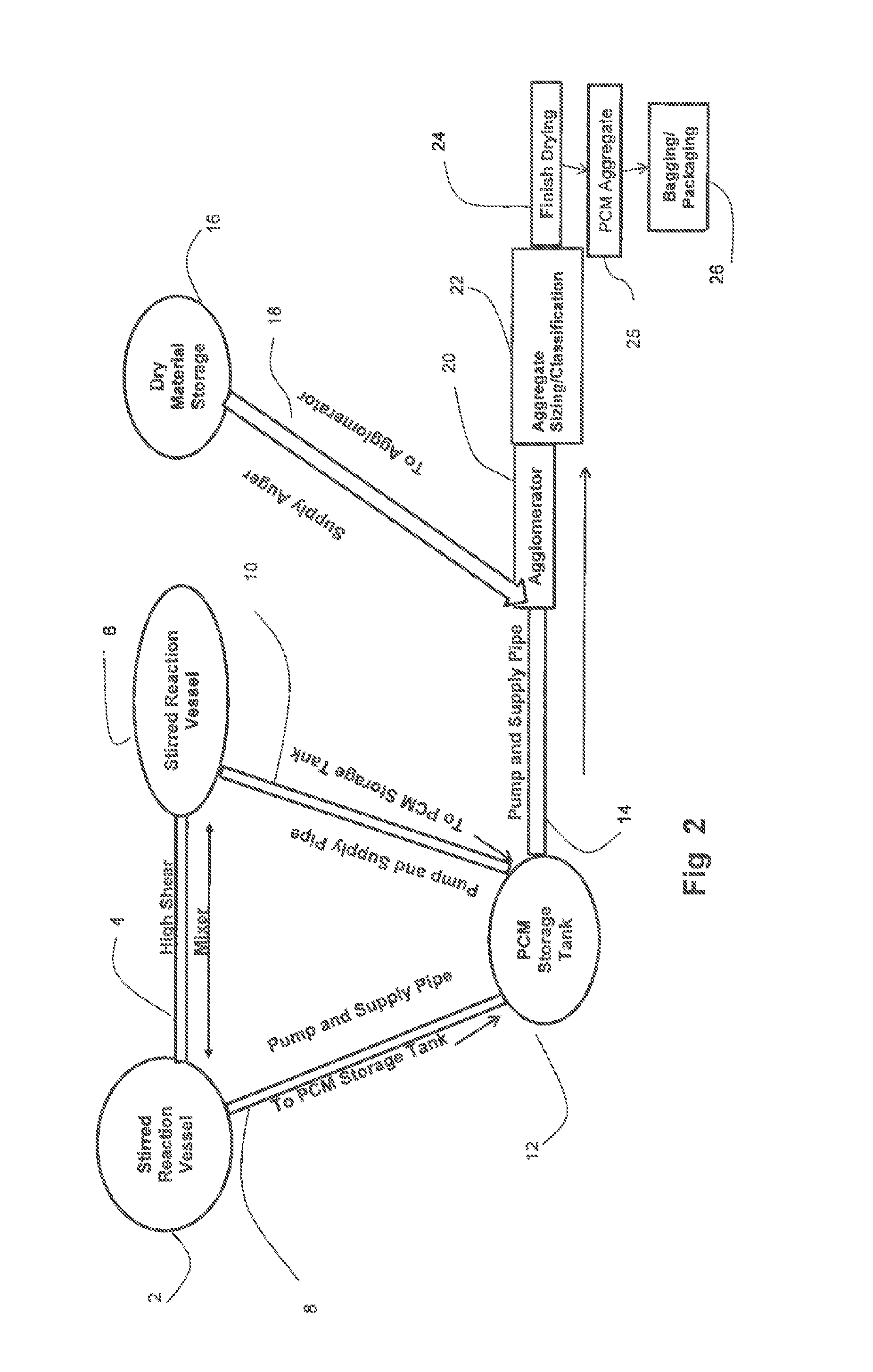Phase change aggregates including particulate phase change material
- Summary
- Abstract
- Description
- Claims
- Application Information
AI Technical Summary
Benefits of technology
Problems solved by technology
Method used
Image
Examples
example 1
[0256]A phase change aggregate with an enthalpy of 31 J / g and a mean particle size of ⅛ inch was produced in a rotating drum agglomerator in a continuous production process. An acid / base dry feed cement containing 11% magnesium oxide, 27% monopotassium phosphate, 5% wollastonite, 44% class C fly ash, plus 11% magnesium aluminum silicate was introduced into the rotating agglomerator at a rate of 6.52 pounds per minute. A like amount of Ciba Chemicals [now BASF / Ciba] DPNT0031 microencapsulated PCM (mPCM) liquid emulsion was pumped to a fine spray nozzle inside the drum agglomerator. With a residence time of 3.1 minutes inside the rotating drum agglomerator, a phase change aggregate with mean average diameter of ⅛ inch and an aggregate outflow rate of 0.3 cubic feet per minute was produced in a continuous test production process.
example 2
[0257]A binder was prepared using dead burned magnesium oxide (HR98 from Martin Marietta), finely ground monopotassium phosphate (300 mesh) and class C fly ash in a ratio of 1:3:7. 100 grams of MgO, 300 grams of MKP, and 700 grams of fly ash were combined as dry ingredients. This mixture was added to 2400 gram of mPCM liquid emulsion (Ciba Chemicals [now BASF / Ciba] DPNT0031). When mixed, the sample began to gel and harden within 30 seconds. After 1 hour the sample was broken into particles of ½ inch diameter or less with a high speed shear mixer. The dry particles, now usable as an aggregate in concrete mixes, were tested to contain 35% PCM solids with an enthalpy of 47 J / g.
example 3
[0258]100 grams of mPCM liquid emulsion (Ciba Chemicals [now BASF / Ciba] DPNT0031) was mixed with 100 grams of magnesium aluminum silicate powder (Acti-Gel® 208). Within 15 seconds, all of the fluid of the mPCM emulsion was adsorbed, leaving a sandlike substance. Flame from a propane torch was applied directly to the sandlike substance, both immediately after mixing, and after it had been allowed to dry for 24 hours, and in both instances, the substance could not be ignited, although it contained thirty percent mPCM with a measured enthalpy of 34 J / g.
PUM
| Property | Measurement | Unit |
|---|---|---|
| Temperature | aaaaa | aaaaa |
| Temperature | aaaaa | aaaaa |
| Percent by mass | aaaaa | aaaaa |
Abstract
Description
Claims
Application Information
 Login to View More
Login to View More - R&D
- Intellectual Property
- Life Sciences
- Materials
- Tech Scout
- Unparalleled Data Quality
- Higher Quality Content
- 60% Fewer Hallucinations
Browse by: Latest US Patents, China's latest patents, Technical Efficacy Thesaurus, Application Domain, Technology Topic, Popular Technical Reports.
© 2025 PatSnap. All rights reserved.Legal|Privacy policy|Modern Slavery Act Transparency Statement|Sitemap|About US| Contact US: help@patsnap.com



